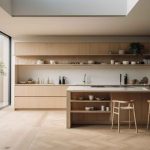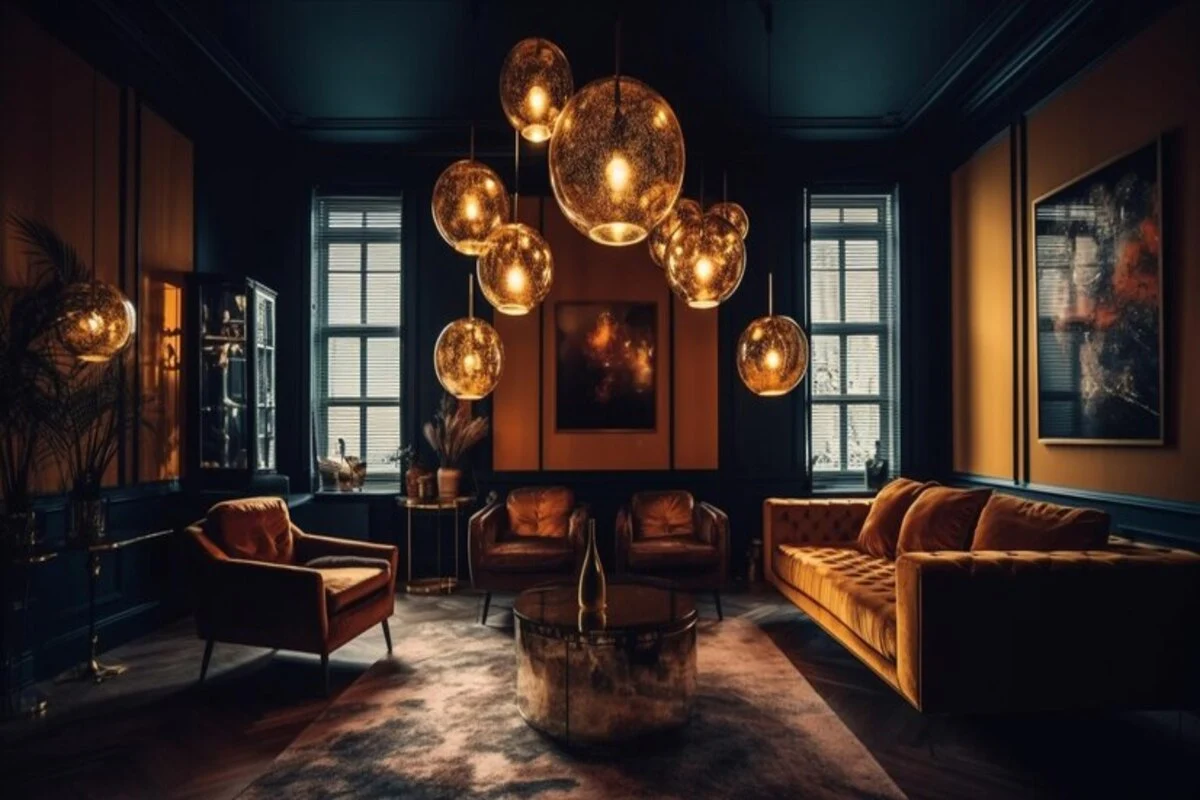Living in a small space doesn’t mean sacrificing style or comfort. With the right furniture choices and design strategies, you can create a cozy, functional, and aesthetically pleasing home. Let’s dive into some expert tips and unique insights on how to achieve big style in small spaces.
Table of Contents
ToggleEmbrace Multi-Functional Furniture
One of the key strategies for making the most of a small space is to use multi-functional furniture. Clara Jones, a tiny living expert, emphasizes, “Embrace multi-functional furniture! Ottomans with storage, nesting tables, and convertible sofas maximize space and offer hidden storage solutions.”. These pieces not only serve multiple purposes but also help in keeping the space organized and clutter-free.
For instance, a sofa bed can be used for seating during the day and transformed into a sleeping area at night. Storage ottomans can double as coffee tables or extra seating while hiding away blankets, books, or other items. Nesting tables can be pulled out when needed and tucked away to save space.
Opt for Light and Airy Furniture
Choosing the right furniture style can make a small room feel larger. Interior designer Michael Lee advises, “Light and airy furniture pieces visually expand a space. Opt for pieces with clean lines, light woods, and glass elements to create an illusion of spaciousness.”
Consider a glass coffee table or a slim-profiled sofa with exposed legs. These choices allow light to flow through and under the furniture, making the room feel more open. Light-colored wood and neutral fabrics also contribute to a sense of airiness.
Maximize Vertical Space
In small homes, vertical space is often underutilized. Organization guru Peter Brown suggests, “Vertical space is your friend! Utilize wall shelves, hanging cabinets, and mounted furniture to free up floor space and create a sense of order.”.
Wall-mounted shelves can hold books, plants, and decorative items without taking up valuable floor space. Hanging cabinets and pegboards in the kitchen can keep utensils and spices organized and within reach. In the living room, consider mounting the TV on the wall to free up surface area for other uses.
Declutter Ruthlessly
A small space can quickly feel cramped and overwhelming if it’s cluttered. Minimalist blogger Jane Wilson advises, “Declutter ruthlessly! Less furniture is more in a small space. Focus on essential pieces that serve multiple purposes and avoid visual clutter.”
Start by assessing each item in your home and ask yourself if it serves a purpose or brings you joy. Donate or sell items that don’t meet these criteria. By keeping only the essentials, you create a more open and stress-free environment.
Strategic Lighting
Lighting plays a crucial role in making a small space feel larger and more inviting. Lighting specialist David Miller says, “Strategic lighting plays a key role in small spaces. Ample overhead lighting with strategically placed lamps can create a brighter and more open atmosphere.”
Incorporate multiple light sources at different levels to create a warm and layered effect. Use floor lamps, table lamps, and wall sconces to brighten dark corners and highlight architectural features. Mirrors can also be strategically placed to reflect light and give the illusion of more space.
Space-Saving Furniture Designs
Consider investing in furniture specifically designed for small spaces. Space-saving furniture designer Emily Clark recommends, “Consider furniture with built-in features like murphy beds, fold-away desks, or modular shelving systems that adapt to your needs and maximize space utilization.”
Murphy beds, which fold up into the wall when not in use, free up floor space during the day. Fold-away desks provide a workspace that can be hidden away when not needed. Modular shelving systems can be customized to fit your space and storage needs, providing flexibility as your needs change.
Insights from Studies
Several studies offer valuable insights into designing small spaces effectively:
- Furniture Layout and Perceived Spaciousness: According to “The Impact of Furniture Layout and Scale on Perceived Spaciousness in Small Apartments” by the Journal of Interior Design, the arrangement and scale of furniture significantly affect how spacious a room feels. Keeping furniture proportional to the room size and arranging it in a way that allows for easy movement can make a small space feel larger.
- Consumer Preferences for Multi-Functional Furniture: The International Journal of Housing Studies’ “Consumer Preferences for Multi-Functional Furniture in Urban Environments” reveals that urban dwellers prefer furniture that serves multiple functions due to space constraints. This preference highlights the importance of choosing versatile pieces.
- Lighting and Space Perception: “The Influence of Lighting Design on User Perception of Space in Small Dwellings” by Lighting Research & Technology demonstrates that well-designed lighting can make small spaces feel more open. Proper lighting can enhance the perceived size of a room and improve overall comfort.
- Decluttering and Well-being: The Journal of Environmental Psychology’s study “The Effects of Decluttering on Stress Levels and Well-being in Small Living Spaces” shows that reducing clutter can significantly improve mental well-being. A tidy and organized space contributes to a sense of calm and satisfaction.
Personal Anecdotes and Practical Tips
On a personal note, I recently moved into a smaller apartment and faced the challenge of fitting my belongings into a compact space. One of my best decisions was to invest in a bed with built-in storage drawers. It not only provided a comfortable place to sleep but also ample space for storing off-season clothes and bedding.
Another game-changer was installing floating shelves in the kitchen. These shelves allowed me to keep my countertops clear, making the kitchen feel larger and more functional. I also added a few plants on the shelves, bringing a touch of nature indoors without taking up precious floor space.
Lastly, I cannot overstate the importance of mirrors. Placing a large mirror opposite a window made my living room appear twice as big by reflecting natural light throughout the space.
Final Thoughts
Living in a small space doesn’t have to mean compromising on style or comfort. By embracing multi-functional furniture, opting for light and airy designs, maximizing vertical space, decluttering, utilizing strategic lighting, and choosing space-saving furniture, you can transform your cozy home into a stylish and functional haven.
Remember, the key is to be intentional with your choices and focus on what truly enhances your living experience. With these tips and expert advice, you’ll be well on your way to making your small space work for you, offering both big style and practicality.
Share via:
Related posts:
 How to Make Oak Kitchen Cabinets Look Modern
How to Make Oak Kitchen Cabinets Look Modern
 How to Hide Under Cabinet Light Wires: A Comprehensive Guide
How to Hide Under Cabinet Light Wires: A Comprehensive Guide
 Can You Paint Thermofoil Cabinets
Can You Paint Thermofoil Cabinets
 How to Install a Lazy Susan Cabinet
How to Install a Lazy Susan Cabinet
 How to Make Oak Kitchen Cabinets Look Modern Without Paint
How to Make Oak Kitchen Cabinets Look Modern Without Paint
 Best Cabinet Colors for Black Stainless Steel Appliances
Best Cabinet Colors for Black Stainless Steel Appliances
 IHMS Chair
IHMS Chair



